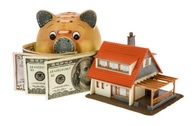Advertisement
75 Percent of Refinancing Homeowners Maintain or Reduce Debt in Q1

Freddie Mac has released the results of its Q1 Cash-Out Refinance Report, showing that homeowners who refinance continue to strengthen their fiscal house. In the first quarter of 2011, 75 percent of homeowners who refinanced their first-lien home mortgage either maintained about the same loan amount or lowered their principal balance by paying-in additional money at the closing table. Fifty-four percent maintained about the same loan amount, the highest share since 1985, when Freddie Mac began keeping records on refinancing patterns. In addition, 21 percent of refinancing homeowners reduced their principal balance.
Borrowers who took "cash-out," those that increased their loan balance by at least five percent, represented 25 percent of all refis; the average cash-out share over the past 25 years was 62 percent.
"The average interest rate on single-family mortgages outstanding at the end of 2010 was about six percent, so there are still plenty of homeowners that can benefit from refinancing," said Frank Nothaft, Freddie Mac vice president and chief economist. "We found the typical borrower reduced their interest rate about 1.2 percentage points by refinancing during the first quarter. For a 30-year fixed-rate mortgage with a $200,000 loan balance, that's a monthly payment savings of about $150."
The net dollars of home equity converted to cash as part of a refinance, adjusted for inflation, was at the lowest level in 15 years (third quarter of 1996). In the first quarter, an estimated $6 billion in net home equity was cashed out during the refinance of conventional prime-credit home mortgages, down from $9.1 billion in the fourth quarter and substantially less than during the peak cash-out refinance volume of $83.7 billion during the second quarter of 2006.
Among the refinanced loans in Freddie Mac's analysis, the median appreciation of the collateral property was a negative six percent over the median prior loan life of five years. In comparison, the Freddie Mac House Price Index shows a 21 percent decline in its U.S. series between the end of 2005 and end of 2010. Thus, borrowers who refinanced in the first quarter owned homes that had held their value better than the average home, or may reflect value-enhancing improvements that owners had made to their homes during the intervening years.
"Consumers continue to reduce their debt, either by paying down or paying off their mortgage loan, or reducing the interest cost," said Nothaft. "Homeowners' aggregate financial-obligation ratio, which peaked during the third quarter of 2007, had dropped by the end of 2010 to a level last seen more than a decade ago."
The median interest rate reduction for a 30-year fixed-rate mortgage (FRM) was about 1.2 percentage points, or a savings of about 20 percent in interest costs. Over the first year of the refinance loan life, these borrowers will save over $1,800 in interest payments on a $200,000 loan.
About the author





